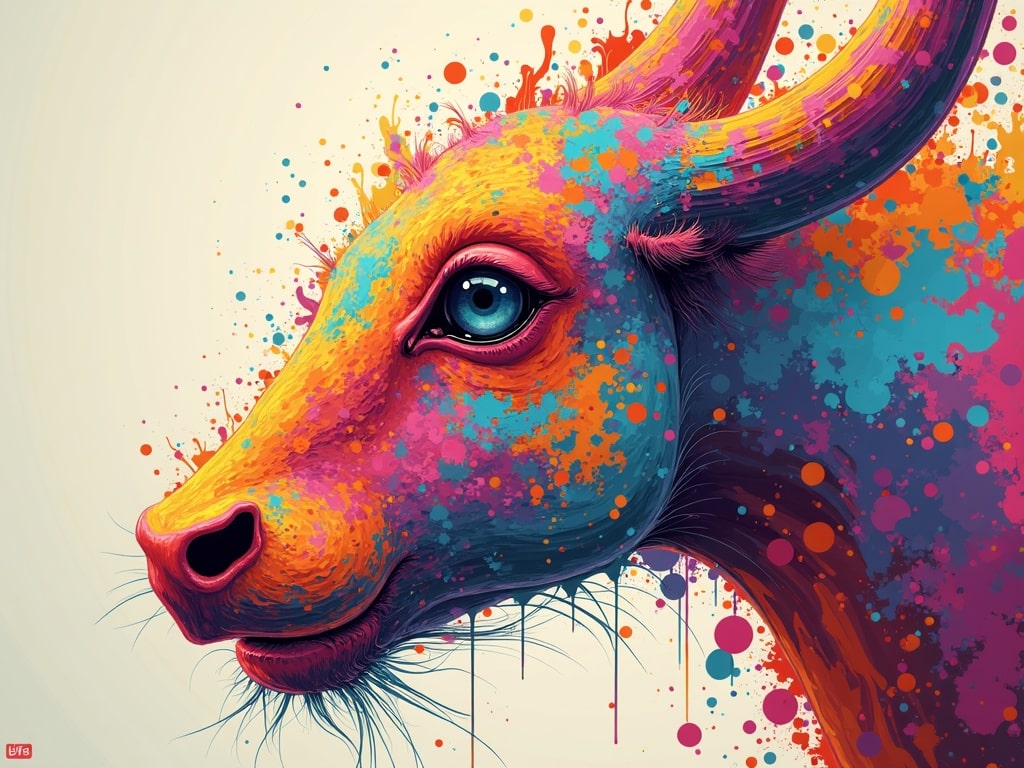What is Contemporary Art Style? Exploring the Ever-Evolving World of Modern Creativity
The art world is a constantly shifting landscape, a mirror reflecting the anxieties, joys, and relentless innovation of our times. But what exactly does contemporary art encompass? Is it simply anything created recently, or is there something more profound that defines this genre? Buckle up, because diving into the heart of contemporary art is like trying to grasp smoke – elusive, multifaceted, and utterly captivating.
Defining the Boundaries: What Sets Contemporary Art Apart?
The most straightforward answer is that contemporary art is art made today. However, that definition, while technically accurate, feels woefully inadequate. It’s more than just recent artwork; it’s a reflection of the current cultural climate, pushing boundaries and often challenging conventional notions of what art *shouldbe.
So, when did this contemporary era begin? Art historians generally place its emergence sometime after World War II, with the rise of movements like Pop Art and Minimalism in the 1960s. This marked a decisive break from Modernism, which had dominated the art world for decades. Modern art, while revolutionary in its own right, still clung to certain aesthetic principles and a narrative of progress. Contemporary art, on the other hand, embraces fragmentation, skepticism, and a questioning of all established norms.
Key Characteristics of Contemporary Art
While defining contemporary art is a challenge, several key characteristics tend to recur:
- Conceptual Focus: Idea often trumps aesthetics. The why behind the art becomes just as important, if not more so, than the how.
- Eclecticism: Contemporary artists draw inspiration from everywhere – high art, low culture, personal experiences, global events, and anything in between.
- Experimentation: New media, unconventional materials, and hybrid forms are embraced. Painting, sculpture, and photography are still relevant, but so are installation art, performance art, digital art, and everything imaginable.
- Social Commentary: Contemporary art frequently engages with social and political issues, acting as a mirror reflecting our world’s complexities and injustices.
- Interactivity: Many contemporary artworks invite viewer participation, blurring the lines between art object and audience experience.
- Self-Awareness: Contemporary artists are often acutely aware of the history of art and their place within it, leading to works that are self-referential, critical, and ironic.
A Kaleidoscope of Styles and Movements
Contemporary art isn’t a monolithic entity; it’s a vibrant ecosystem of diverse styles and movements. Trying to categorize them all would be an exercise in futility, but here are a few prominent examples:
- Pop Art: Exploding onto the scene in the 1960s, Pop Art embraced popular culture, consumerism, and mass media imagery. Think Andy Warhol’s soup cans and Roy Lichtenstein’s comic-book paintings.
- Minimalism: A reaction against the perceived excesses of Abstract Expressionism, Minimalism stripped art down to its bare essentials – simple geometric forms, industrial materials, and a focus on the object itself.
- Conceptual Art: In Conceptual Art, the idea is paramount. The physical artwork is often secondary, or even non-existent, serving only to document or communicate the concept.
- Performance Art: This ephemeral art form involves live actions or events, often challenging the boundaries between art and life.
- Installation Art: Creating immersive environments, installation art transforms spaces into artworks, inviting viewers to step inside and become part of the experience.
- Digital Art: Born from the digital revolution, digital art encompasses a vast range of practices, including computer-generated images, interactive installations, and net art.
- Street Art: Emerging from urban landscapes, street art brings art to the public sphere, often engaging with social and political issues.
[internal_link]
The Role of the Artist in a Contemporary World
The role of the artist has evolved significantly in the contemporary era. No longer confined to the studio, artists often work in diverse settings, collaborating with communities, engaging in research, and acting as social activists. The artist isn’t just a creator of beautiful objects; they’re a critical thinker, a cultural commentator, and a catalyst for change.

Navigating the Contemporary Art World: A Viewer’s Guide
Contemporary art can be challenging, even intimidating, for viewers. It often demands more than just passive observation; it requires active engagement, critical thinking, and a willingness to question your own assumptions. Here are a few tips for navigating the contemporary art world:
- Do Your Research: Before visiting a museum or gallery, take some time to read about the artists and artworks on display. Understanding the context can greatly enhance your appreciation.
- Ask Questions: Don’t be afraid to ask questions. Gallery attendants and museum docents are there to help you understand the art.
- Trust Your Instincts: There’s no right or wrong way to experience art. If something resonates with you, explore that feeling. If something doesn’t, that’s okay too.
- Embrace the Ambiguity: Contemporary art often resists easy answers. Embrace the ambiguity and allow yourself to be challenged and provoked.
- Consider the Intention: Think about what the artist might be trying to communicate. What ideas or emotions are they exploring?
- Look Beyond the Surface: Contemporary art often has layers of meaning. Don’t be afraid to dig deeper and explore the underlying themes and concepts.
The Enduring Power of Contemporary Art
Despite its often-challenging nature, contemporary art plays a vital role in our society. It challenges our perceptions, sparks dialogue, and encourages us to think critically about the world around us. It’s a messy, complex, and ever-evolving reflection of who we are, where we’ve been, and where we’re going. It holds a mirror to our culture, forcing us to confront uncomfortable truths and celebrate unexpected beauty. And in that challenging, ever-shifting reflection, we just might discover something profound about ourselves. It refuses to be easily defined, constantly reinventing itself with each new generation of artists. And that, perhaps, is its greatest strength.